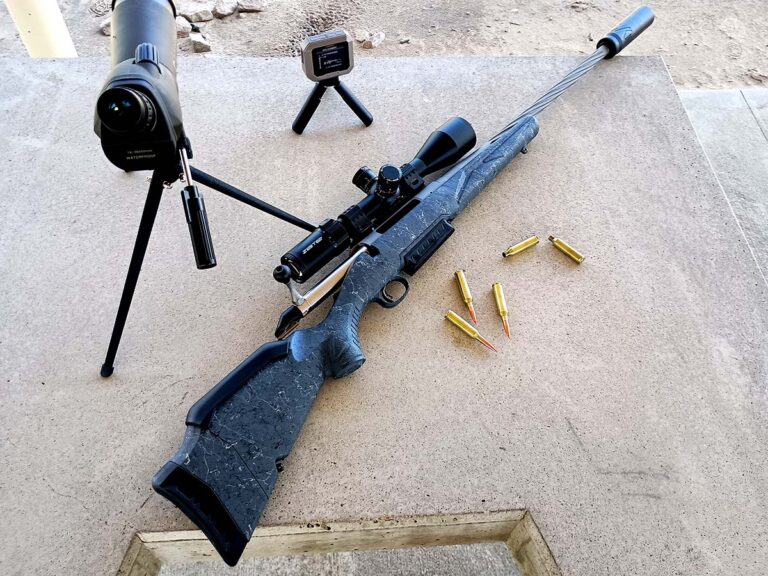
Ruger's upgraded bolt-action keeps its budget-friendly crown with smart improvements and dependable accuracy.
No corner of the gun world has a more heated arms race than hunting rifles—specifically, budget hunting rifles. The rally to rake in deer, elk and antelope hunters’ hard-earned bucks has resulted in plenty of flops and a few success stories. The Ruger American Rifle falls in the latter.
Born more than a decade ago, the entry-level arm quickly set ranges on fire—not just among the penny-pinchers. Earning a reputation for unparalleled accuracy at its price point, the Ruger bolt-action became almost a must-have, even among the money-is-no-object crowd.
And why not? There’s something novel—and satisfying—about owning a rifle capable of outshooting irons two or three times its price.
I’ve been lucky enough to have plenty of experience with the Ruger gem, in the field and at the range. That bred cautious optimism when the company released the American Rifle Gen II this past fall. Externally, it looked like a winner—but how did it perform downrange? Is the new generation still the budget king I and many other shooters have grown to love?
American Rifle Gen II Specs
Barrel Length: 20″
Overall Length: 41.75″
Thread Pattern: 5/8″-24
Capacity: 3+1
Magazine: Detachable Box
Sights: None, Picatinny rail
Weight: 6.5 lbs.
Twist: 1:8″
MSRP: $729
Pros
- Excellent Accuracy for Price
- Upgraded Ergonomics & Features
- Lightweight
Cons
- Blade Safety
- Stock Adjustment Spacers Sold Seperately
Curious about the Gen II's predecessor? Check out our full review of the original Ruger American Rifle.
Arming Up With the American Gen II
I brought in the American Rifle Gen II Standard model in 7mm PRC, which put me well behind the curve of the rifle’s initial release. Ruger didn’t tool up for the magnum or modern magnum analogs until 2025.
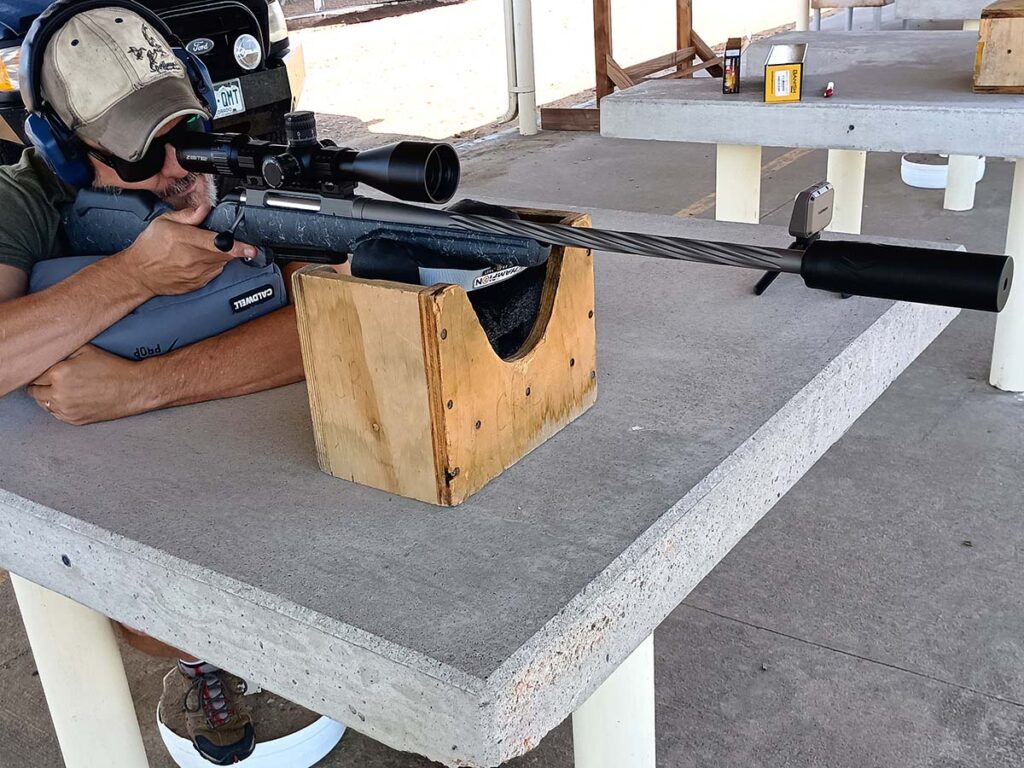
My idea was a budget-level long-range hunting setup, so I turned to a ZeroTech Vengeance FFP 6–24×50 scope with an RMG MRAD reticle. It’s ZeroTech’s hunting option, though it takes heavy cues from tactical optics, with an advanced long-range Christmas tree reticle and exposed turrets.
To finish the rig, I mounted a Silencer Central Banish Backcountry suppressor on the muzzle. This lightweight titanium can is rated up to .300 RUM and tailored specifically for hunting.
American Rifle Gen II Barrel
From pictures and in hand, the most striking upgrade on the Gen II is its cold-hammer-forged barrel. It’s shortened from the original to a trim 20 inches and spiral fluted.
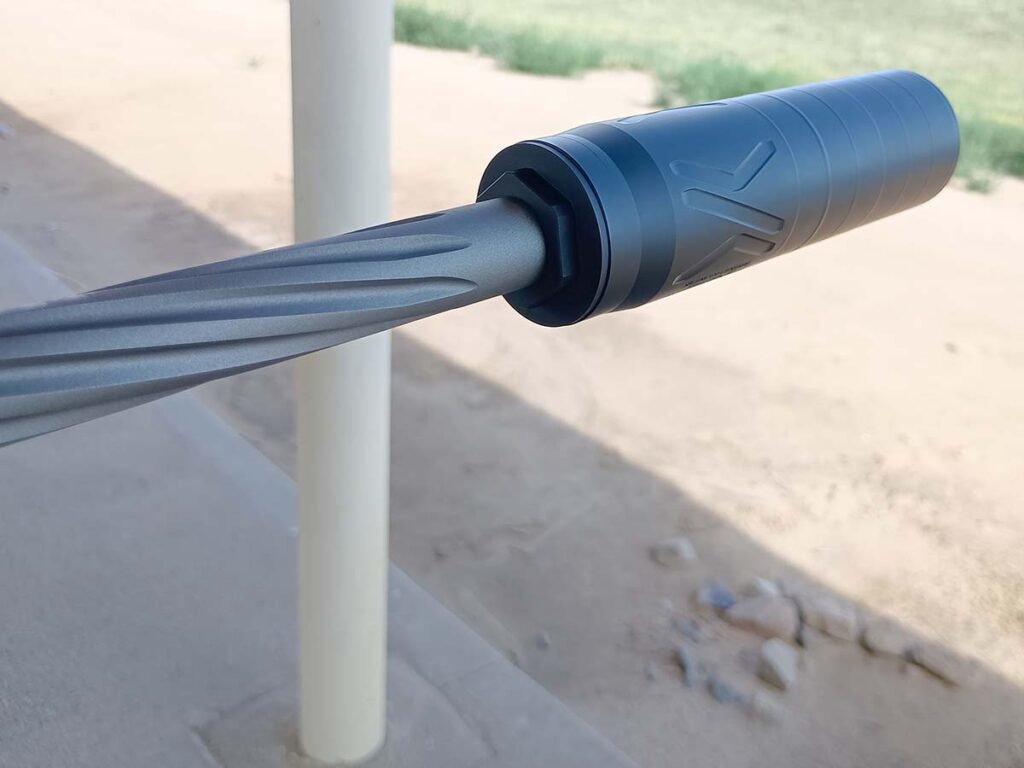
While fluting has become commonplace on affordable arms, it’s more than just eye candy—it helps keep the rifle at a manageable 6.5 pounds (without a scope), and its increased surface area aids in cooling during longer strings.
Ruger includes a muzzle brake on all Gen II models and, more importantly, a threaded muzzle. The thread pattern is 5/8×24 RH, making it compatible with most hunting-specific suppressors.
The package is topped off with an attractive Gun Metal Gray Cerakote finish, ensuring all-weather durability.
American Rifle Gen II Action
Ruger didn’t mess with what works. The Gen II maintains the American’s semi-enclosed port and cylindrical action. The added material makes the action stronger and more rigid—one of the key reasons this platform has proven so accurate.
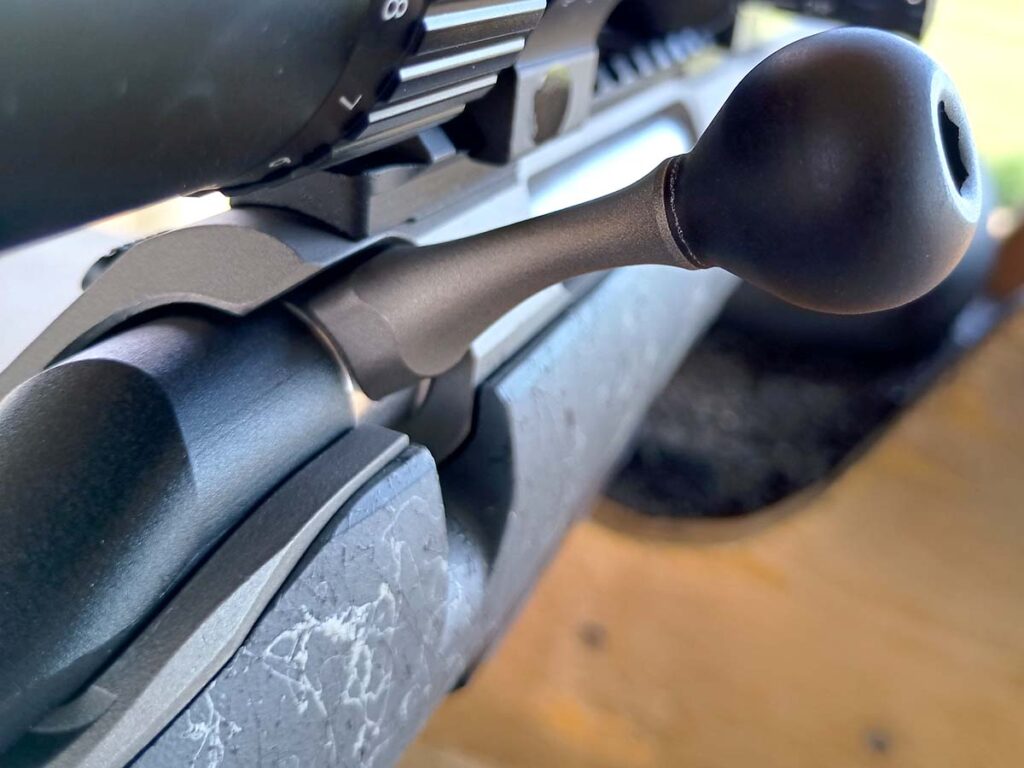
The rifle keeps the three-lug, full-body bolt—a one-piece design known for strength and affordability. It retains a 70-degree throw, which plays nice with large optics. One change: Ruger now includes an oversized, threaded bolt handle (5/16×24) for easier upgrades.
A welcome addition is the new three-position tang safety. Along with “safe” and “fire,” a middle setting locks the trigger but allows the bolt to cycle, so the rifle can be safely unloaded. A small but thoughtful upgrade.
American Rifle Gen II Trigger
I’m torn on the Gen II’s trigger.
It’s crisp, creep-free and adjustable between 3 and 5 pounds. Mine shipped set at a snappish 3.5 pounds, so I left it as-is. Furthermore, shoe is wide, ribbed and easy to index—comfortable and confidence-inspiring in the field.
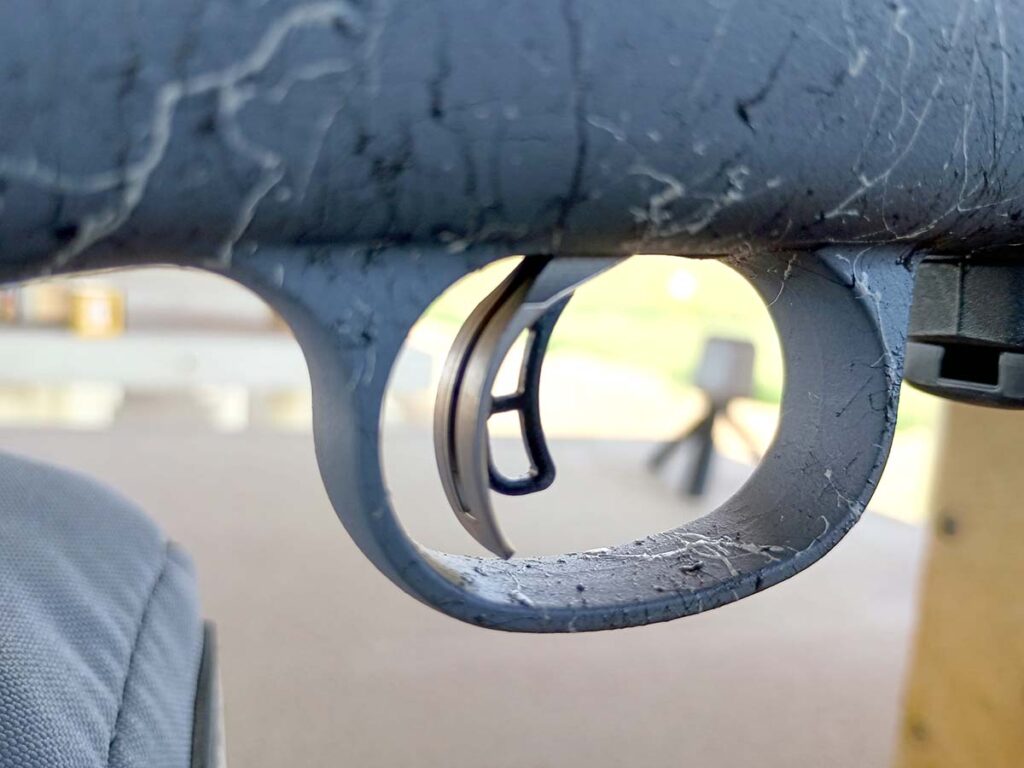
My only complaint is Ruger retained the blade safety. I don’t know how this became a thing on rifles, but I don’t like it—your opinion might vary. It’s a minor nit that wouldn’t stop me from buying the rifle.
American Rifle Gen II Stock
Along with the barrel, this is where much of the Gen II’s appeal lies. Ruger gave it a gray polymer stock with black speckles. It’s visually more refined than the previous generation and offers a welcome texture upgrade.
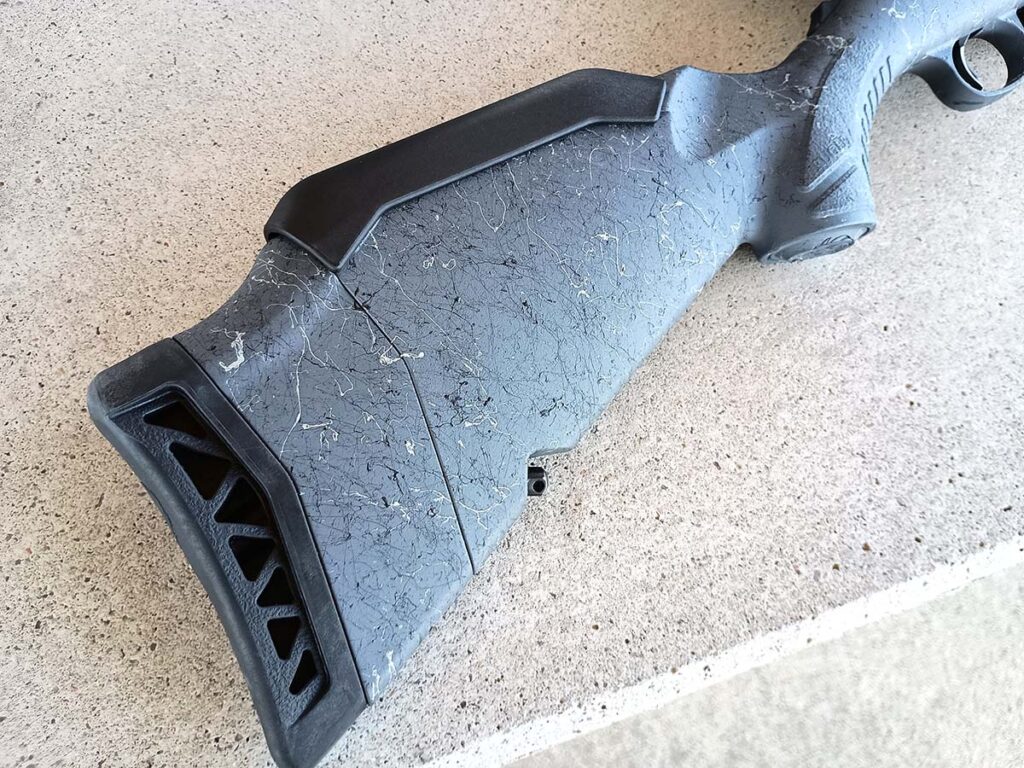
Despite being polymer, the stock doesn’t feel cheap. It retains a feature that helped the original’s accuracy—Power Bedding. These are V-shaped aluminum bedding blocks that center the action and provide a secure metal-to-metal fit.
Ruger also moved to a Monte Carlo-style stock. I’m neutral on this, though it is fully adjustable for length of pull and comb height. That said, the spacers required for adjustment must be purchased separately, which is a letdown.
American Rifle Gen II at the Range
I was nervous the Gen II wouldn’t live up to the original, but the opposite happened—it overperformed.
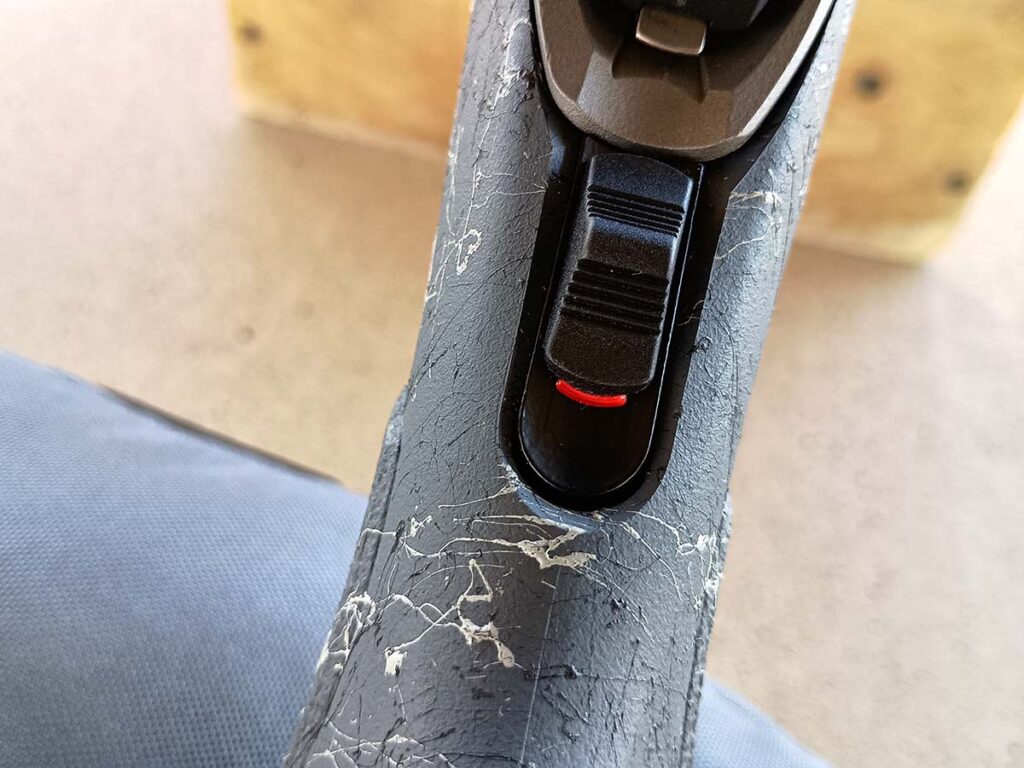
Shooting five-shot groups from a bench at 100 yards with 175-grain Federal Fusion and 175-grain Federal Premium ELD-X, I found the rifle preferred the ELD-X. It turned in a best group of 0.49 inches and averaged 0.87 inches. That’s outstanding for any factory rifle—especially at this price.
I stretched the rifle out on our club’s mile-long range. With fixed targets ranging from 1 to 3 MOA, I hit every 3 MOA plate out to 500 yards and went 4-for-5 on the 1 MOA target at the same distance.
I’d never shoot at an animal from that far—I still have the legs to close the gap—it passed every test I had for a long-range hunting rifle.
Final Thoughts
The Gen II continues the American Rifle’s stellar legacy—and in 7mm PRC, I fully recommend it. The trigger is excellent, the build quality is tight and it shoots straight.
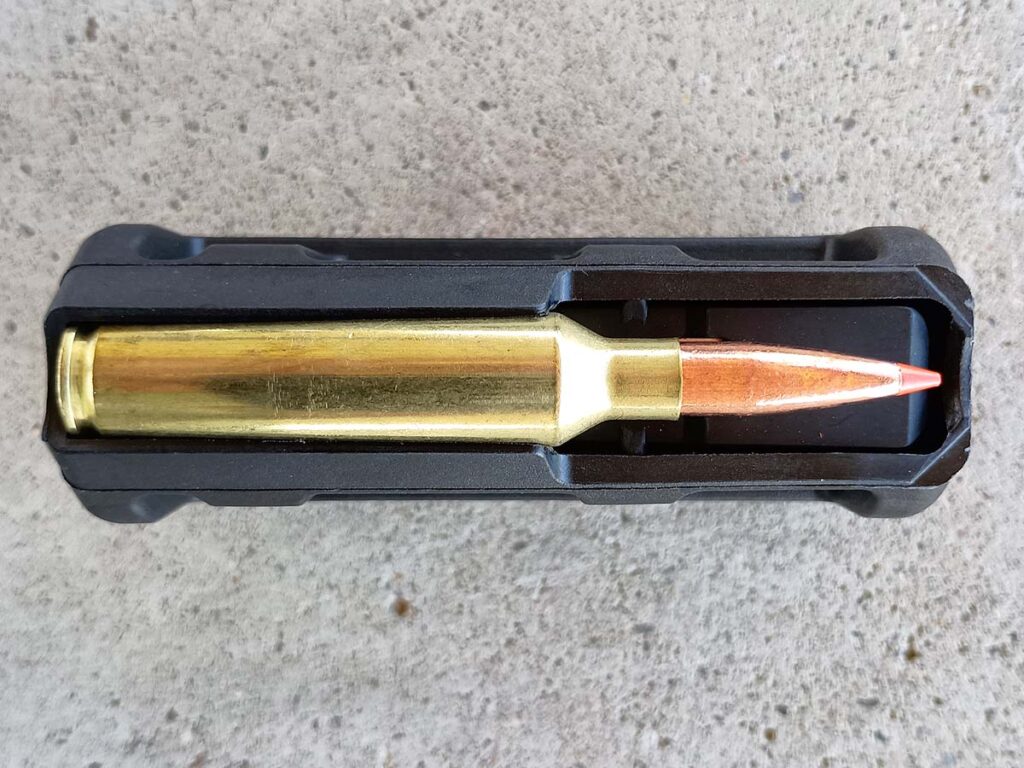
It did take some adjustment to get comfortable with the Monte Carlo stock—my shoulder pocket and eye alignment didn’t line up perfectly at first—but that resolved with time.
Ruger also improved the interface. The scalloping above the grip appears more recessed, supporting modern thumb-off shooting styles.
If there’s one downside, it’s the brake. It works, but it’s loud. A suppressor is a worthwhile investment if you're opting for a magnum cartridge.
Parting Shot
The Gen II costs about $130 more than the original, but factoring in inflation, it still qualifies as a budget rifle. The new generation offers more chambering options, better ergonomics, and the same deadly accuracy that made the original a legend.
Unless the budget bolt-action world sees a major shake-up, Ruger’s latest is likely to remain king of the hill.
Get More Ruger Info:
- Great Ruger Guns
- Ruger No. 1
- Ruger Precision Rifle
- Ruger Redhawk
- Ruger Super Redhawk
- Ruger Blackhawk
- Ruger Single Six
- Ruger 10/22
- Ruger LCR
- Ruger LCRx
- Ruger 77/22
- Ruger 77/44
- Ruger SR1911
- Ruger Hawkeye
- Ruger Mark IV
- Ruger SR-556
- Ruger LCP II
- Ruger American Magnum
- Ruger Gunsite Scout Rifle
- Ruger SR-762
- Ruger Red Label
- Ruger SR40
- Ruger Single Nine
- Ruger P345

![Best Concealed Carry Guns In 2025 [Field Tested] Wilson Combat EDC X9S 1](https://gundigest.com/wp-content/uploads/Wilson-Combat-EDC-X9S-1-324x160.jpg)


![Best 9mm Carbine: Affordable PCCs [Tested] Ruger Carbine Shooting](https://gundigest.com/wp-content/uploads/Ruger-Carbine-Shooting-100x70.jpg)
![Best AR-15: Top Options Available Today [Field Tested] Harrington and Richardson PSA XM177E2 feature](https://gundigest.com/wp-content/uploads/Harrington-and-Richardson-PSA-XM177E2-feature-100x70.jpg)
